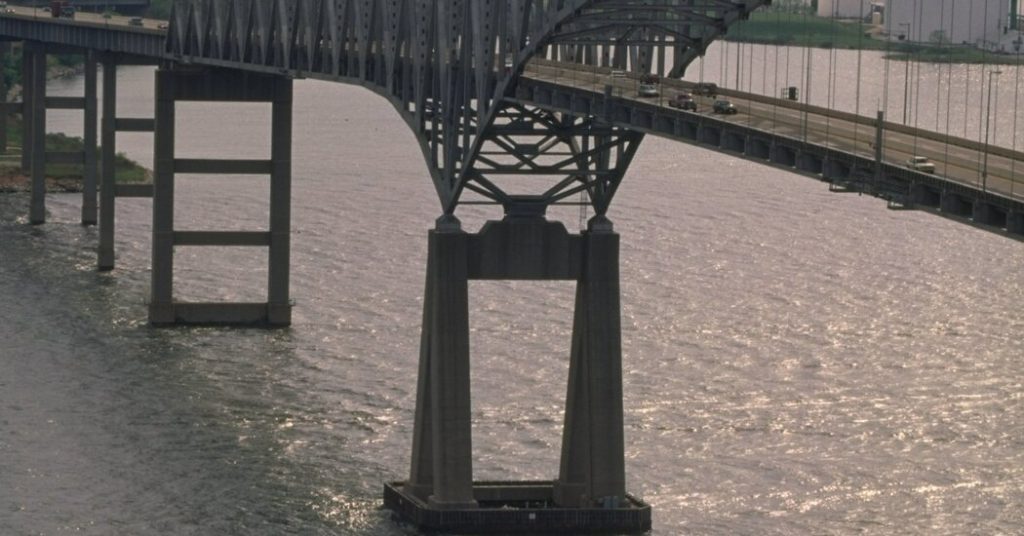A cargo ship lost control and slammed into the Francis Scott Key Bridge in Baltimore, which was not the first incident of a ship hitting the bridge. In 1980, a container ship named the Blue Nagoya also hit the Key Bridge but did not cause the collapse. The Blue Nagoya was moving at about six knots, while the ship involved in the recent incident, the Dali, was traveling just under seven knots, according to the National Transportation Safety Board. The 1.6-mile-long bridge collapsed under the impact of the 95,000-ton cargo ship, prompting investigators to analyze the structural integrity of the bridge.
Structural engineers have noted that no bridge would have been able to withstand the direct hit from a cargo ship of that size and weight. However, they also pointed out that the Key Bridge lacked protective barriers that could have redirected or prevented a ship from crashing into the piers. Impact protection devices have been common in the industry since a freighter collapsed the Sunshine Skyway Bridge in Tampa Bay in 1980. Experts have raised concerns about the increasing size and weight of cargo vessels posing a greater risk to bridges, as seen in the case of the Dali hitting the Key Bridge.
The National Research Council report did not specify the weight of the Blue Nagoya when it hit the Key Bridge in 1980, but experts believe that the Dali was notably larger and heavier, with proportions three times greater. Vessels weighing up to 100,000 tons can have a catastrophic impact on bridge piers if there is a lack of protection in place. Researchers and civil engineers emphasize the importance of preventative measures to safeguard bridge support structures from potential collisions with shipping traffic.
Benjamin W. Schafer, a professor of civil and systems engineering at Johns Hopkins University, highlighted the drastic changes in the size of ships from the 1970s to the present day. He suggested that the recent accident would likely offer valuable lessons for enhancing the protection of bridge support structures against shipping traffic. As investigators continue to collect evidence at the site of the collapsed Key Bridge, the full story of how and why the bridge fell may take years to uncover. The incident has raised questions about the need for improved safety measures to prevent similar accidents in the future.
In conclusion, the recent collision between the cargo ship and the Key Bridge in Baltimore has reignited concerns about the vulnerability of bridges to impacts from large and heavy vessels. While past incidents have highlighted the need for protective barriers and impact protection devices, the evolving size and weight of modern cargo ships present new challenges for bridge safety. Experts and researchers emphasize the importance of implementing preventative measures to safeguard bridge support structures and prevent catastrophic accidents like the collapse of the Key Bridge. The investigation into the cause of the bridge collapse is ongoing, and it is expected to provide valuable insights into how to enhance bridge safety in the face of increasing maritime traffic.


